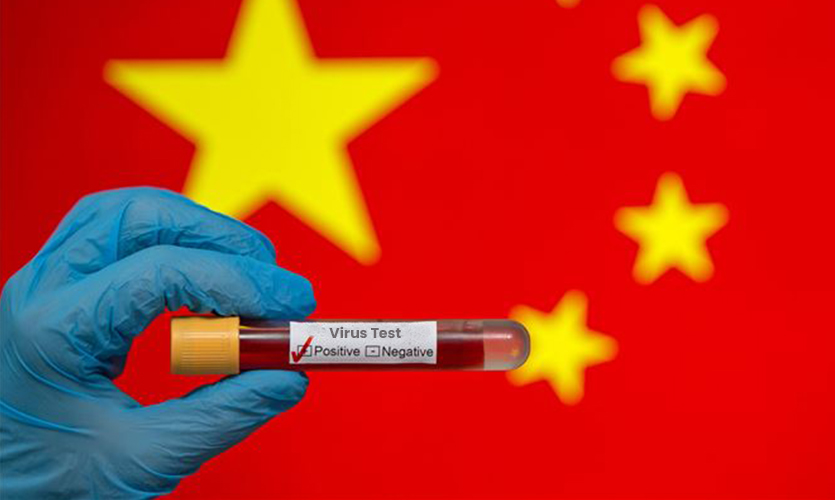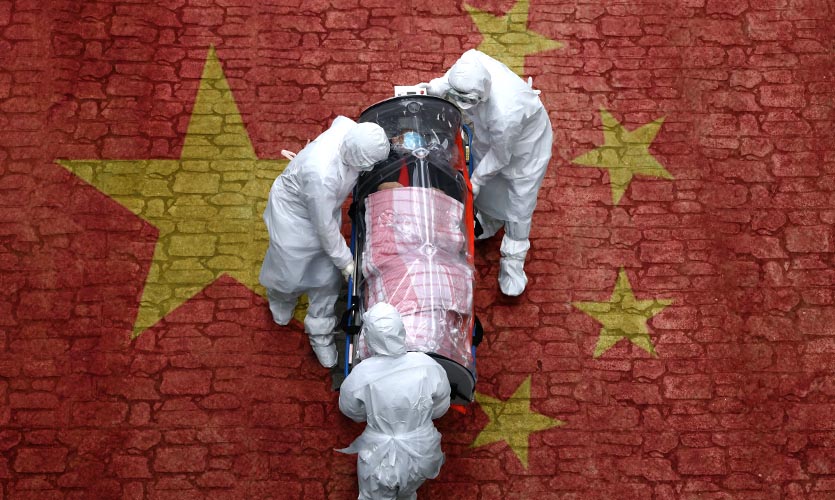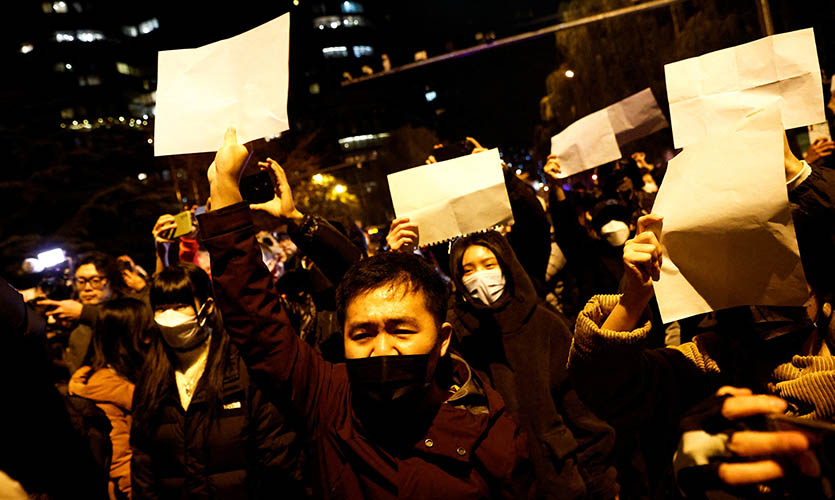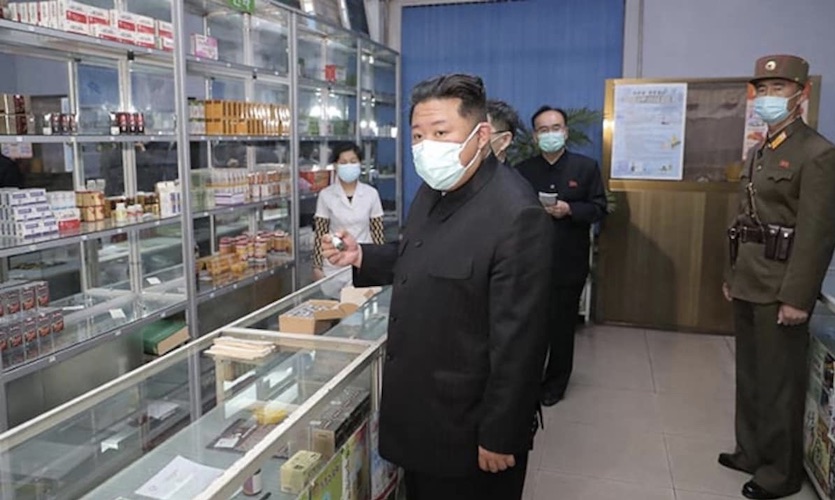A new subtype of the Omicron variant of COVID-19 was discovered in China on Sunday, with 2089 new local infections reported this morning; the most since August 20. Global Times reported that the new sub-variant evolved from the BA.1.1 branch of Omicron, and was isolated from a mildly infected COVID patient in a city less than 70 kms from Shanghai.
According to Shandong’s provincial officials in northern China, variation BF.7 has been the cause of locally transmitted COVID-19 infections since October 4. Additionally, the World Health Organization had issued a warning on the extremely contagious BF.7 COVID subvariant. If prompt preventive measures were not taken, it was also anticipated that the sub-variant would emerge as a new dominant characteristic of BF.7. According to a professor quoted by the Global Times in a health-related newspaper, there is a high possibility that it could emerge as the dominant variant in China as well.
Neither the subtype nor the coronavirus sequences submitted to GISAID, where scientists around the world share their sequences to monitor mutations, match other coronaviruses causing COVID in China. There was also no infection found domestically in a case reported in Dalian city in northern China on Friday, as reported by the municipal government on its WeChat account.
In addition to testing their patience, the current outbreak is also testing the Chinese people’s tolerance of tough restrictions at a time when most of the world has re-opened its borders. There were almost 12,000 asymptomatic cases reported nationwide on Saturday.
In northeast China, 1.5 million people suffered some form of lockdown on Sunday, disrupting work and damaging the economy, as millions of other Chinese suffered similar conditions. In a statement, the National Health Commission said that China had registered 13,146 cases of COVID-19 on Sunday, without reporting any new deaths. As a result, the country’s infection tally has reached its highest since mid-February 2020. Shanghai’s 25 million residents were tested en masse, and 70 percent of the national caseload was found to be in the city.
According to Xinhua News Agency, Vice Premier Sun Chunlan arrived in Shanghai to oversee the prevention efforts, and command officials to curtail the outbreak “as soon as possible.”
On Saturday, there were more than 8,000 cases of COVID-19 in the financial hub of the country, including 7,788 asymptomatic infections. The Shanghai government announced that a new batch of mass testing would begin on Monday.
In a post on an official WeChat account, Sun ordered Shanghai officials to conduct measures “resolutely”, in order to stop the outbreak in Jilin. A quarantine is currently in effect for all 25 million residents of the metropolis. Reportedly, authorities in Sanya suspended all transportation to halt the spread of COVID.
A new round of mass testing appears likely to drag on for several more days as residents grow angry over lockdowns that were initially planned to last only four days. Several parents have expressed fear that their children would be separated from them in the event of a positive test, while residents complain that there isn’t enough fresh food and pets cannot be walked outside.
In late 2019, Wuhan, the city where the coronavirus first appeared, became one of the last places in the world to follow a “zero-COVID” strategy, which is now in a state of flux.
Through hard, localised lockdowns, mass testing, and travel restrictions, China managed to keep the daily caseload below double digits until March. There have been thousands of cases each day over the past few weeks, especially in Shanghai, the epicentre of the outbreak, where streets were eerily quiet as people stayed indoors over the weekend.
In order to follow Party policy, prove their allegiance to President Xi Jinping, and avoid any widespread breakout that may endanger their careers, local authorities are clamping down, as reported by CNN. Due to the restrictions, some people within China have started referring to this year’s holiday as “the bleakest Golden Week ever”, as people have grown weary of the three years of COVID restrictions and decided to stay at home rather than take the chance of being caught in unexpected lockdowns.
According to the Ministry of Culture and Tourism, this year’s holiday travel was just 422 million less than it was in 2017. Despite the lowest flying ticket costs in five years, CNN reported that the number of travellers was the lowest since 2014, and much below pre-pandemic levels. Analysts claim that the economy and consumer spending have been severely harmed by Beijing’s zero-COVID policy. According to Ken Cheung, chief Asian FX strategist at Mizuho Bank, “The COVID resurgence and risk of being locked down discouraged consumption and travel notably.”
Separately, a significant private poll released on Saturday revealed that China’s enormous services sector experienced its first decline in five months, in September. According to a statement by S&P Global Ratings, the Caixin services Purchasing Managers Index, which concentrates on small and medium-sized businesses in China’s service industry, fell to 49.3 last month, from 55 in August. It was the index’s first decline since May. Contraction is indicated by a value below 50. The statement added that efforts to stop COVID from spreading throughout China resulted in a fresh decline in service sector activity, which interrupted corporate operations, and limited travel. Particularly, employment fell more. The employment indicator fell to its lowest level since May and entered the contraction zone for the ninth consecutive month, as per CNN.
Michael Ryan, director of emergencies for the WHO, stated last week that it was crucial for all nations, including China, to have a plan in place for easing pandemic restrictions.
However, he noted that the size of China’s population presents a special challenge to its healthcare system, and that policymakers must create a plan that allows them to leave safely.
Read more: WHO Says India Missed 90 Percent Of COVID-19 Related Deaths










